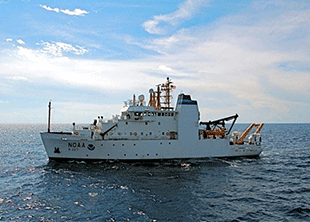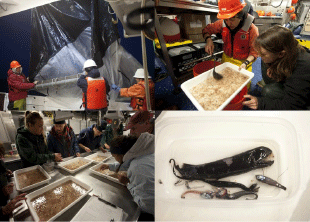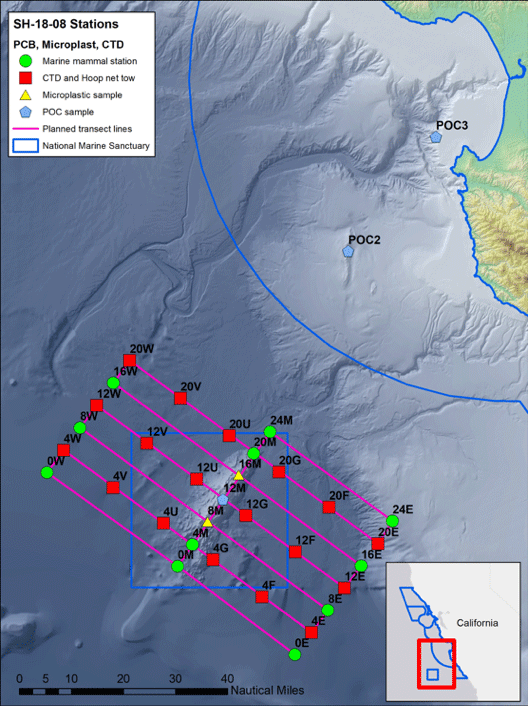Davidson Seamount Expedition 2018
 |
 |
| Research Vessel: | NOAA Ship Bell M. Shimada
(where is the Shimada now – live map) |
| Project: | Oceanographic and Biological Monitoring of Davidson Seamount in Monterey Bay National Marine Sanctuary |
| Expedition Dates: | JULY 15, 2018 to JULY 24, 2018 | CHECK OUT THE DAILY CRUISE BLOG! |
Overview:
Sanctuary scientists will conduct a regional characterization and monitoring of the physical and biological components of the open ocean ecosystems of Davidson Seamount within Monterey Bay National Marine Sanctuary (MBNMS). Data will be used to relate the spatial patterns of bird and mammal distribution with prey and oceanographic patterns, and identify resources at risk from human threats. NOAA and other regulatory agencies use this information in management decisions and to protect resources in national marine sanctuaries. Projects include marine mammal and seabird observations, plankton tows, midwater fish trawls, CTD, echo-sounder data collection, sea surface collection of microplastics, water sampling for persistent organic pollutants and harmful algal blooms (HABs).Research Area:
The principal study area includes Davidson Seamount and surrounding waters in Monterey Bay National Marine Sanctuary. The survey is planned to be a series of predetermined transect lines with sampling oceanographic stations for water and biology. Also, included in this project will be nighttime operations to collect vertical migration data on the quality and composition of plankton in comparison to daytime samples. A map of the survey area, transect lines, oceanographic sample stations is shown in Figure 1.Objectives:
- To better understand the linkages between climate, oceanographic conditions, and the abundance and distribution of seabirds, marine mammals, and their primary prey species such as zooplankton and fish
- To better understand the distribution of microplastics in the offshore environment, as it is an emerging issue that can threaten human health
- To better understand the distribution of persistent organic pollutants from main coastal sources to the offshore environment
Participating Institutions:
- NOAA’s Monterey Bay National Marine Sanctuary (MBNMS)
- NOAA’s Office of National Marine Sanctuaries (ONMS)
- Point Blue Conservation Science (Point Blue)
- Applied Marine Sciences
- UC Santa Cruz (UCSC)

Figure 1. Map of sample area
